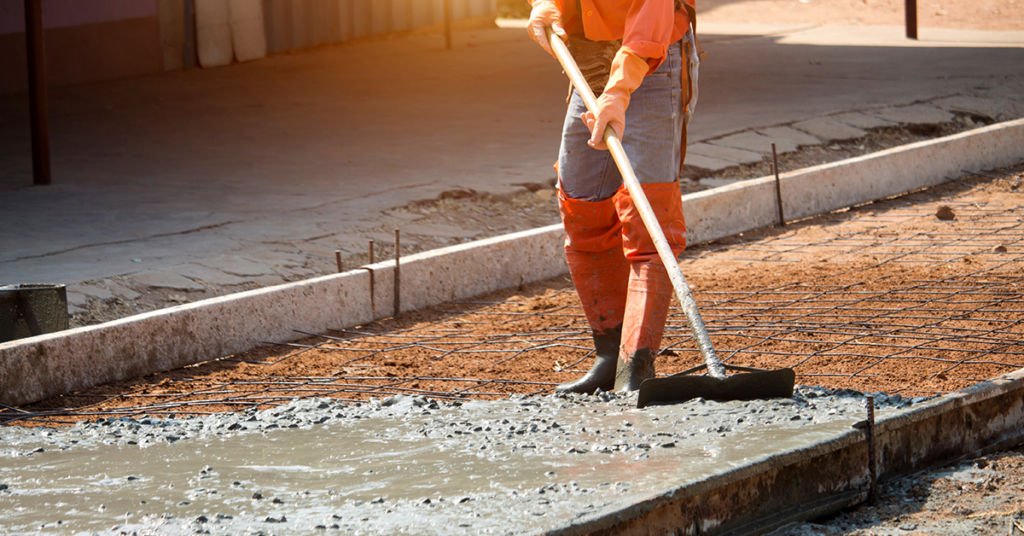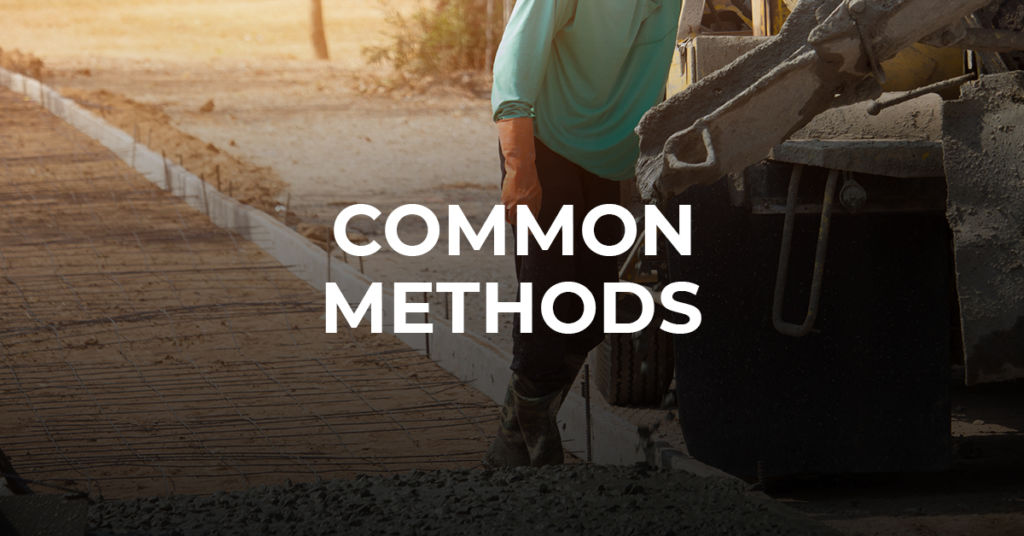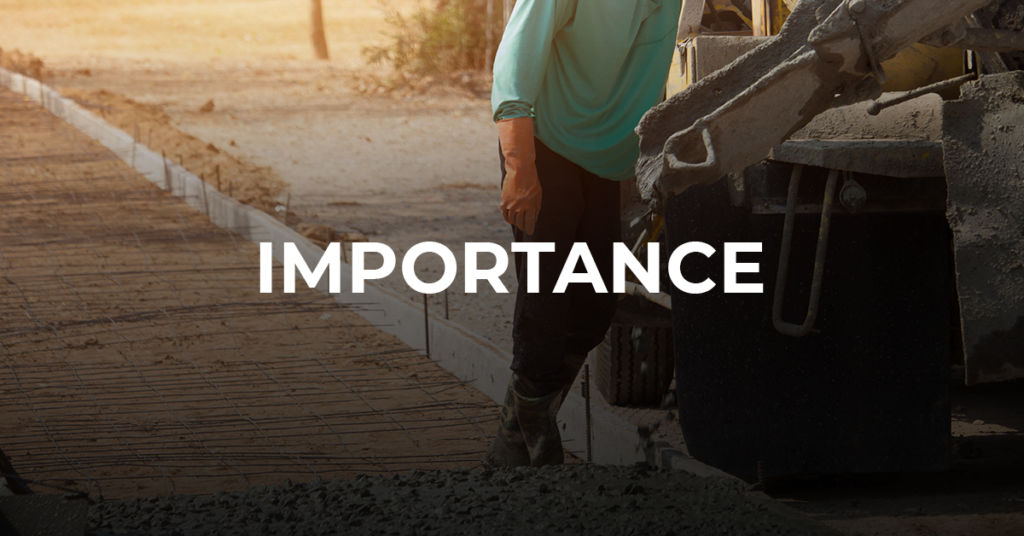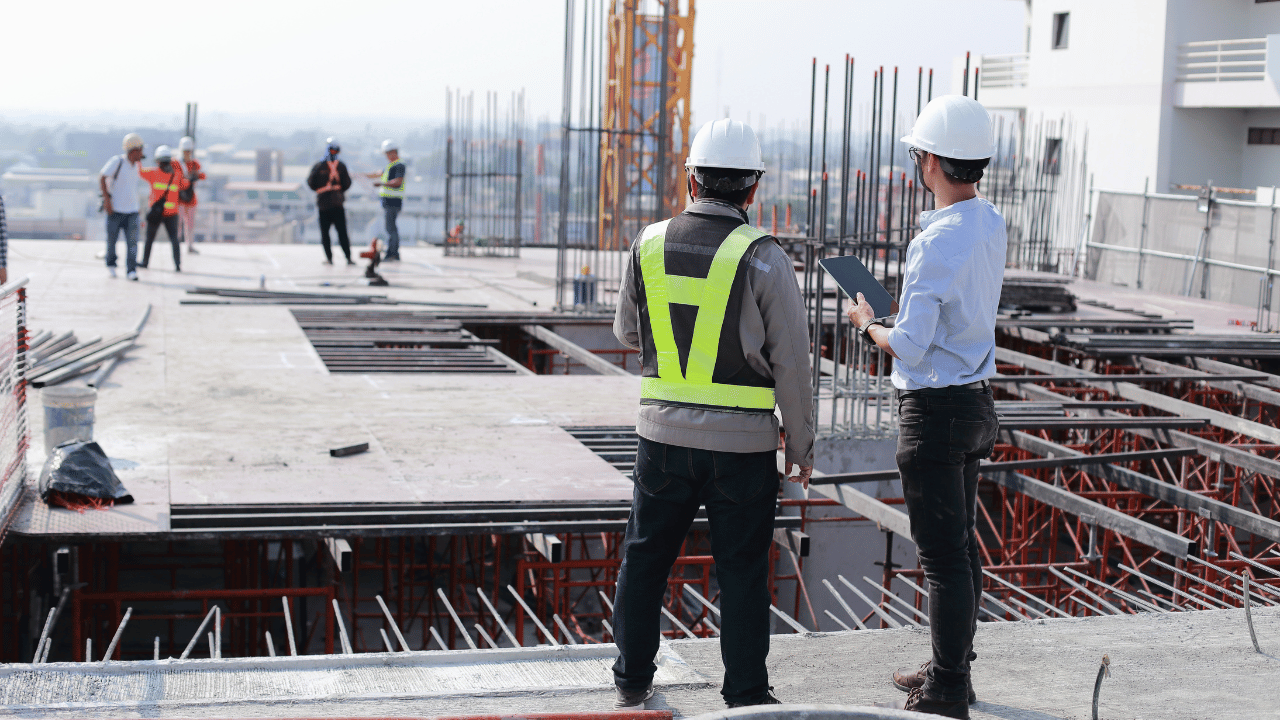
Concrete Restoration Services: Everything You Need to Know
John Souffront

Concrete Restoration Services Guide:
Though it can be used in various applications and is durable, concrete can be damaged. Over time, concrete degrades due to damage, natural wear, and tear, or erosion, leaving behind unsightly patterns and structural changes. Repair, replacement, or restoration are the usual responses to damage to a concrete building or surface.
The expense and difficulty of crack repairingis high. A concrete resotration is the first thing to undergo for small to moderate cracks. Restoration of concrete addresses structural and aesthetic issues that arise from damage, unlike repair.
Concrete repair contractors will take measures to restore your concrete surface or building to its pre-damage state. This includes removing cracks, fading, stains, and other problems.
Common Methods of Concrete Restoration
Once you determine that concrete restoration services are the best option for your property, your contractor will assist you in determining which method is most appropriate for addressing your particular needs.
The four most typical repair techniques are epoxy injection, polyurethane grouting, leveling, and complete removal and replacement.
Epoxy Injection
Filling cracks and openings with epoxy is one option. Epoxies forge a sturdy weld that can enable a surface with crack to keep taking the weight it’s used to. As far as concrete restoration techniques go, this is one of the least intrusive and cost-effective options, yet it is not without drawbacks.
Epoxy injection is not a replacement for fixing the issue that led to the fracture in the first place.
To prevent further cracking, you will need to inject epoxy into the area repeatedly unless you address the underlying cause. To use epoxy, you must first ensure that the professionals fix all the leaks and that the region is completely free of moisture.
Polyurethane Grouting
In the same way that epoxy is a restorative resin, polyurethane grouting repairs severe damage to concrete. Lightweight, quick-acting, and less intrusive, it is well-suited to demanding or heavily-used situations. Since it is non-toxic and dries quickly, you can return to business after applying it, provided you resolve the underlying issue.
Instead of epoxy injections, polyurethane grouting may operate in damp or unclean environments without degradation. However, it’s not a permanent fix, so it might not hold up under heavy stress.
Concrete Leveling
When the surface of a slab of concrete has sunk or separated, this problem can be fixed by jacking it back up from below. You may be familiar with these terms as they relate to the procedure: raising, leveling, and slab jacking.
The stages necessary to finish leveling concrete are as follows:
- Creating a passageway through the concrete floor or deck to the ground below.
- Even out the concrete’s surface by filling the damaged region with polyurethane foam or filler substance.
- Using fresh concrete to fill and smooth the application holes.
Leveling concrete is less disruptive and more cost-effective than removal and replacement. It’s a practical alternative for homeowners whose lots slope steeply but who don’t want to (or can’t afford to) tear up and replace their old concrete.
Concrete Removal and Replacement
When concrete is too bad for any other treatment to save it, its removal and replacement is generally the only option. The replacement may be preferable to multiple minor restoration or repair activities if it will save money, time, or both.
When the structural integrity of a structure is at risk due to damaged concrete or when the concrete itself is no longer functional, this is the recommended course of action.
For instance, a concrete parking garage floor may need replacement if it has numerous significant fractures, gaps, and sinking that prevent vehicles from being driven on the surface. Large concrete sections mustn’t receive removal or replacement without proper equipment and professional laborers.
You might also want to read: HAVE DETERIORATING CONCRETE ON YOUR HANDS? HERE’S A QUICK CONCRETE RESTORATION GUIDE
Factors That Lead Concrete to Degrade
While an excellent concrete surface or enclosure will be sturdy, long-lasting, and supporting, it is vulnerable to premature deterioration from several environmental variables.
The following are examples of frequent triggers of chemical breakdown and structural damage in concrete:
Temperature
Even while concrete can survive high temperatures, excessive heat and cold or continual changing between the two causes it to deteriorate, especially when water is present. Water collecting in puddles on cracked and broken concrete can cause flooding and more damage. Concrete can receive big damages through water freezing and expanding by up to 9 percent.
Overload
Damage, including bending, warping, cracking, and chipping, can result from overloading. For concrete, this is especially a problem in places with a lot of foot and vehicle activity, such as on sidewalks, driveways, and parking lots.
Corrosion
Fading and general symptoms of wear and tear are part of the natural aging process that results from extensive usage and exposure. Persistent contact with corrosive substances, such as those produced by hydraulic wear, or the corrosion of embedded elements, such as metal, can lead to the premature deterioration of the concrete around them.
Impact
Concrete can swiftly and abruptly deteriorate due to accidental and unnatural deterioration. Blasting, flames, and tool/vehicle/machinery impacts are all excellent examples. Depending on the force of the impact, the remaining cement may sustain further damage from factors such as open cracks if they don’t receive repairs.
Environment
Since natural disasters like earthquakes, seismic tremors, seawater, and tornadoes are unavoidable, even the most solid concrete surfaces and buildings are vulnerable to them. These weather conditions might exacerbate the uneven surface or the excessive cracking and shifting of concrete.
Chemicals
When exposed to de-icing salts, chemical sulfates, industrial waste, food and beverage, and acids, concrete surfaces can undergo chemical changes. In addition to weakening the concrete over time, this reaction can make it unstable and inflict aesthetic damage.
When Do You Need Concrete Restoration Services?
When is it appropriate to plan a concrete restoration appointment to save time, money, and frustration? It’s important to look out for these issues with your concrete construction or surface:
Cracks
Surfaces, including walls and floors, often feature cracks ranging from barely visible dents to gaping holes. There are several kinds of cracks, ranging in severity, things like shrinking and settling can cause that. Small fissures might compromise the safety of the flooring and the efficiency of your building’s heating and cooling systems. Bugs and water might find their way through any openings in your structure.
Discoloration
Stains, fading spots, slight surface corrosion, and tire markings all fall under the category of “discoloration,” which doesn’t threaten the building’s structural integrity but does detract from its aesthetic value. Clean, finished concrete presents a more professional appearance. However, this kind of damage can be ignored if necessary.
Flaking
The flaking of concrete is a slow chipping process that leaves a thin layer of fine dust-like concrete on damaged areas. When producing crystalline silica, this dust is unpleasant to work with and exceedingly dangerous to breathe in.
Spalling
Breaking apart into small or big pieces or spalling happens when the concrete surface deteriorates. This causes bumps and uneven flooring in heavily traveled areas.
Irregularities
Surface irregularities can be attributed to either poor installation or natural deterioration of the concrete. No matter the temperature, water will pool in low areas and uneven surfaces, producing a hazardous situation when frozen. Furthermore, erosion can be accelerated by the freeze-thaw cycle that freezing temperatures can trigger. There is a high risk of substantial damage in structural applications where concrete is not perfectly flat.
Gap
The edges of sidewalks and patios and the spaces between concrete slabs can develop gaps. Gapping can be caused by many different things, such as soil erosion or movement, seismic vibrations, or even collision damage.
Energy
It may be time to check the concrete floors and walls of your building if you’ve seen an unexpected increase in your facility’s energy bills and can’t figure out why. The home heating and cooling cost could increase if the insulation isn’t enough.
Substantial damage can occur in ways that might not be immediately obvious. These problems endanger the safety of your staff and the general public and could even lead to physical harm. Rapid deterioration is also possible, leading to more complex and persistent disfigurement.
You might also want to read: TOP CONCRETE CRACK REPAIR METHODS YOU MUST KNOW OF
Importance of Concrete Restoration
Houses, stores, walkways, and public gathering places are just some places that can benefit from concrete restoration services. Taking care of your concrete problems as soon as possible helps you avoid the hassle of replacing the concrete.
It can be a time-consuming and challenging operation that could force you to close down your building or remove your working surface for a few days.
Maintaining your concrete’s functionality and keeping expenses down necessitates preventative maintenance. Additionally, this is the most effective approach to keeping concrete safe and aesthetic appeal. Cracked or severely chipped concrete poses a safety risk to pedestrians and can compromise the stability of your building or platform.
It Improves Concrete Durability
Regular maintenance can help extend the life of the concrete and avoid early aging or deterioration, extending its lifespan to anywhere from 40 to 90 or even longer. Preventive maintenance can fix cracks, scuffs, and buckles before they become significant problems. Such durability is essential for constructions that rest on concrete foundations or piers. Cost-effectiveness is another reason to prioritize preventative maintenance of concrete over fixing issues as they arise, especially when those problems potentially endanger persons, property, or other related structures.
It Enhances Safety
Public areas such as sidewalks, patios, driveways, and parking garage floors can be particularly vulnerable to the hazards presented by concrete that has been damaged or has simply aged. When buildings’ foundations or support structures deteriorate, their dangers increase dramatically.
The risks associated with these are reduced when concrete is restored.
- Slippery
Damaged concrete loses its original grip, making the surface dangerously slippery for both vehicles and pedestrians. Slipperiness in concrete can be improved through restoration before it is made even more hazardous by rain, snow, or ice.
- Tripping
Uneven surfaces like those caused by popouts, potholes, cracks, elevated edges, holes, and chips make it easy for people to fall. The worst-case scenario is that it damages a vehicle. It also makes the area inaccessible to people using wheelchairs, walkers, strollers, and other mobility equipment, promoting accessibility for customers and staff.
- Instability
The instability of concrete manifests itself in the form of buckling or uneven surfaces brought on by excessive weight. The consequences for structural concrete could be disastrous, leading to high repair costs and unsafe conditions for those in the area. A concrete structure that has been weakened is more likely to be damaged by an impact or erosion.
It Makes Concrete Look More Appealing
When operating a commercial building or facility, it is essential to keep it looking clean and presentable.
With time, concrete can lose its color and vitality from various factors such as tire and scuff marks, oil, food, debris spills and stains, chemical and acid discoloration, and UV fading from sunlight.
As a result of the uneven pace of fading, certain portions of your concrete could appear patchy or textured.
It Boosts Insulation
The R-value of your building can improve through concrete for the walls, expansion joints, and flooring because of its inherent thermal resistance.
The use of concrete in construction aids in reducing heat loss because of the material’s ability to retain warmth. As a bonus, it helps keep the inside of your home dry by preventing the seepage of excess moisture. On average, the R-value of low-density concrete is greater than that of high-density concrete.
As concrete deteriorates, its insulating qualities diminish. Stale air and moisture sealed inside the structure can now seep back out, leading to higher utility bills and less effective use of space. As a result, it will become impossible to ignore unless the situation is fixed.
Having your concrete surfaces and joints professionally restored will increase insulation and save you from these problems. However, that condition can also stay with the help of routine preventative checks.
Final Words
This was an in-depth guide on concrete restoration services where we understood the different concrete restoration methods, the reasons for substantial degradation when we need to undergo concrete restoration services, and the benefits of such a service.
If you are a victim of such a problem and wish to undergo a concrete repair service, you are at the right place. Being a well-recognized brand in areas like 40-year recertification, concrete restoration, and infrared thermography inspection, Souffront Construction and Engineering aims to deliver client-satisfying services keeping the needs and problems in mind. Feel free to contact our support team to book an appointment and get your property inspected.
John Souffront
John Souffront is a seasoned leader in the construction and engineering industry, with over a decade of experience at the helm of Souffront Construction & Engineering. Known for his unwavering commitment to excellence and innovation, John has propelled his firm to the forefront of the field, delivering cutting-edge solutions for complex projects around the country.
Build Your Project
Ensure safety and compliance on your construction site with our experienced team. Call us today.
Contact Us





